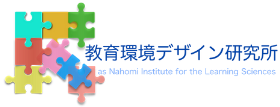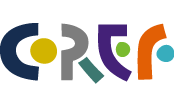“Learning means to continue to develop wisdom while relating with others” is our basic concept. Supporting this concept are various study results that have been clarified in cognitive science and learning science. We will continuously develop this theme in the future, through the activities of this organization.
Learning science – A new viewpoint of learning research
Learning science is an area of research that seeks to draw out high-quality learning by configuring the theory of learning based on cognitive science, and repeating practical examinations based on this theory. Learning science focuses on learning that occurs not only at school but also at home and at the workplace. Research involves learning over a far longer span than in the past, in an effort to determine how people learn and to achieve higher-quality learning on the basis of the findings obtained from such research.
The idea of learning science is discussed here in more detail.
Collaborative learning – Learning diverse views
Examination of learning processes indicates that even when individual learners encounter the same information, the understanding of that information varies from one person to another. Collaborative learning is a method of learning by which individuals can deepen their own understanding by mutually utilizing such differences and then expanding the applicable range of the learned results.
The key points of collaborative learning are as follows.
- Individuals’ ideas are deepened as a result of integration of diverse understandings.
- Individuals understand by themselves in relationships with companions.
- The applicable range of the individual’s own understanding expands.
Collaborative learning respects individual ways of understanding, and learners are the central figures in the process.
Jigsaw method – Creation of an active, constructive, and interactive learning environment
To encourage collaborative learning, it is necessary to create an environment in which learners can learn actively, constructively, and interactively while solving problems skillfully by combining slightly different views, mainly through hearing others’ opinions and explaining to others.
One technique that encourages collaborative learning is the jigsaw method, recommended by the CoREF Promoting Organization.
With this method, for example, students may be divided into several groups. They read materials written on a theme from multiple viewpoints, create explanations within the range of their own understanding, and exchange those explanations with those of others in order to configure an understanding of the whole theme and to solve problems related to this theme by integrating the information they exchange.
Details of the jigsaw method are presented here.

